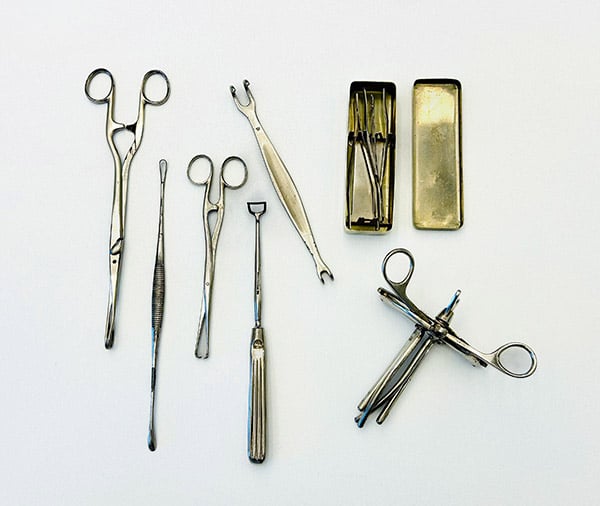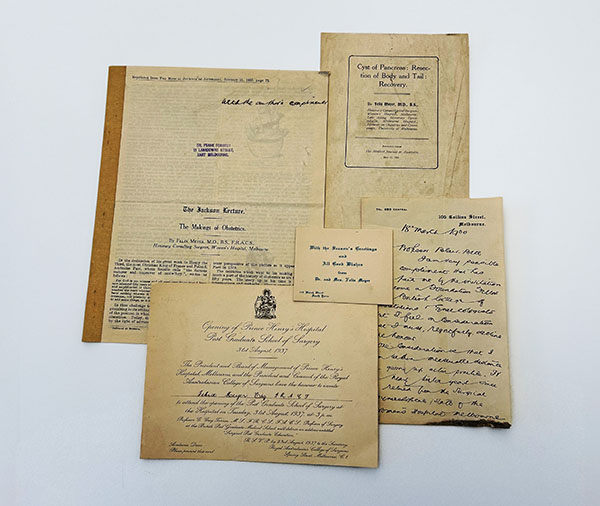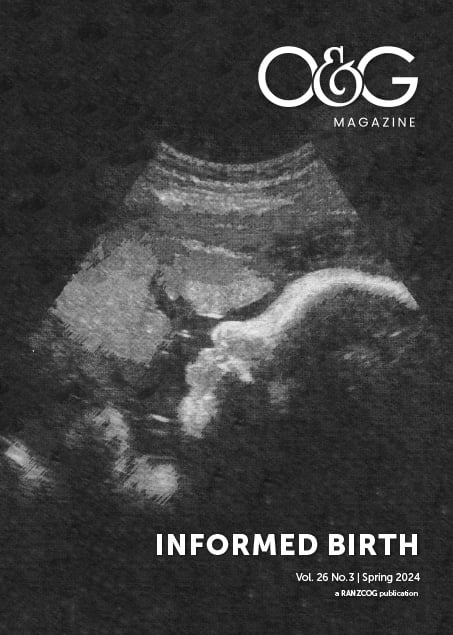This issue we look at a prominent early figure in the history of obstetrics and gynaecology in Australia – Dr Felix Meyer.
Born in Melbourne in 1858, Meyer was a gifted school student in his early years. In 1873, he commenced studies at Wesley College and was named dux of the College in 1875, winning the matriculation examination exhibitions in classics, English, French, history, and geography in that year.1 Meyer’s true passion, however, was medicine.
Meyer was a graduate of the University of Melbourne’s medical school, attaining his MBBS in 1880-81 and his MD in 1902.2 Along with T.R.H. Willis, he was responsible for the foundation of the Medical Students’ Society at the University. Following his graduation, Meyer became the sole resident medical officer at the Lying-In Hospital (which would later become the Royal Women’s Hospital) from 1881 to 1885. During this period Meyer was very active in establishing a raft of initiatives at the hospital, initiating “both systematic clinical teaching of students and formal training of midwives” and founding “the Victorian Nurses’ Association and the nursing journal Una, which he edited for five years.”2 Prior to Meyer’s tenure, “trained nurses, as we understand the term, did not exist.”3 According to one account, Meyer “was not only an able teacher, but a valued friend of students and nurses.”1

Examples of surgical instruments used by Dr Felix Meyer. Left to right: Pocket clip for Michel clip application and removal; Tissue forceps; Rectal speculum. Photo: Jess Bacon
Meyer subsequently moved into private practice as a specialist in obstetrics and gynaecology, working in that capacity until his retirement in 1935. During his career, he held a number of other positions which exemplified his dedication to his chosen field. He was the President of the Victorian Branch of the British Medical Association in 1894, held the position of Lecturer in Obstetrics and Gynaecology at the University of Melbourne between 1914 and 1918, and in 1927 was a foundation Fellow of the College of Surgeons of Australasia (Royal Australian College of Surgeons).2 Meyer was also the “creator of the board of examiners for the Victorian state committee of midwifery and its first chairman, 1916; and member of the obstetrical research committee set up by the faculty of medicine in 1925, which led to the establishment in 1929 of the chair of obstetrics in the University of Melbourne.”2
The College is fortunate to hold a number of items relating to Dr Felix Meyer in its historical collections. This includes a collection of 18 surgical instruments used by Dr Meyer, donated to the College by Dr John Downes in 2000. Instruments include curettes, forceps, a rectal speculum, and a pocket kit for Michel clip application.
Also included in this donation was some paper-based ephemera relating to Felix Meyer. This interesting collection includes a small Christmas card, some photographs of Dr Meyer, an invitation to the opening of Prince Henry’s Hospital Post Graduate School of Surgery in 1937, and two papers written by Dr Meyer. One is on a case of a cyst of the pancreas, written for the Medical Journal of Australia in 1916, and the other is a copy of Meyer’s Jackson Lecture paper delivered in Brisbane in 1932 on the topic of ‘The Makings of Obstetrics.’
Perhaps most notably, this collection also includes a draft of a letter made out to Professor William Blair-Bell, founder and then-President of the Royal College of Obstetricians and Gynaecologists (RCOG) in March 1930. The letter is written in response to an apparent invitation from Professor Blair-Bell to become a Foundation Fellow of RCOG. In the letter, Dr Meyer writes to “regretfully decline the honour” as he is “within measurable distance of giving up active practice.”

Paper ephemera relating to Dr Felix Meyer. Photo: Jess Bacon
In a demonstration of the esteem in which Meyer holds the profession, and his colleagues who practice it, he follows up his decision to decline the offer by suggesting that “the honour of invitation to become Fellows and Members of the College appears to have passed by several names of men of excellent standing.” This suggestion is given in his opinion as “one of the oldest gynaecologists here” and from his “experience of more than 30 years’ association with the Melbourne Women’s Hospital, as well as Lectures at the University.” Interestingly, this section of the letter has a line drawn through it, suggesting that Meyer had second thoughts about including it in his response. Still, as the saying goes, it’s the thought that counts, right?
The College’s collection of items relating to Dr Felix Meyer were kindly donated by Dr John Downes in 2000. A selection of these items is currently on display at Djeembana College Place in Naarm Melbourne. Members and Trainees are invited to visit the College to view these fascinating insights into obstetrics history.
References
- Felix Henry Meyer. Medical Journal of Australia. 1937;2:626-629. doi: 10.5694/j.1326-5377.1937.tb43947.x
- Forster, FMC. Meyer, Felix Henry (1858-1937). Biography – Felix Henry Meyer – Australian Dictionary of Biography (anu.edu.au). Australian Dictionary of Biography, National Centre of Biography, Australian National University. 1986. Accessed July 8, 2024.
- Barrett, J. In Memoriam – Felix Henry Meyer. 1937.






Leave a Reply